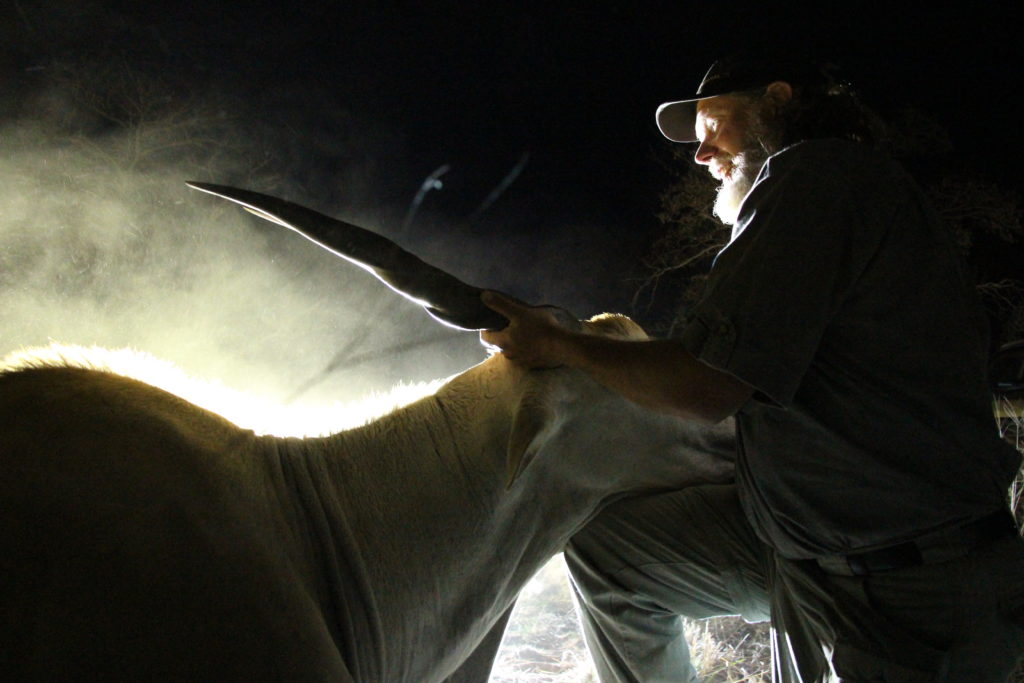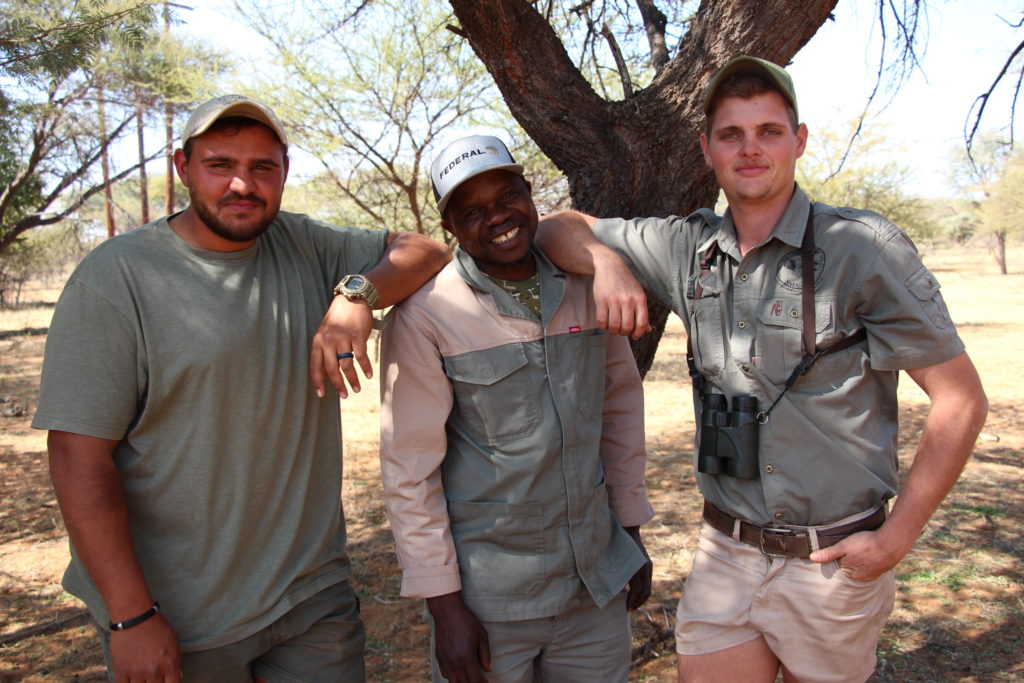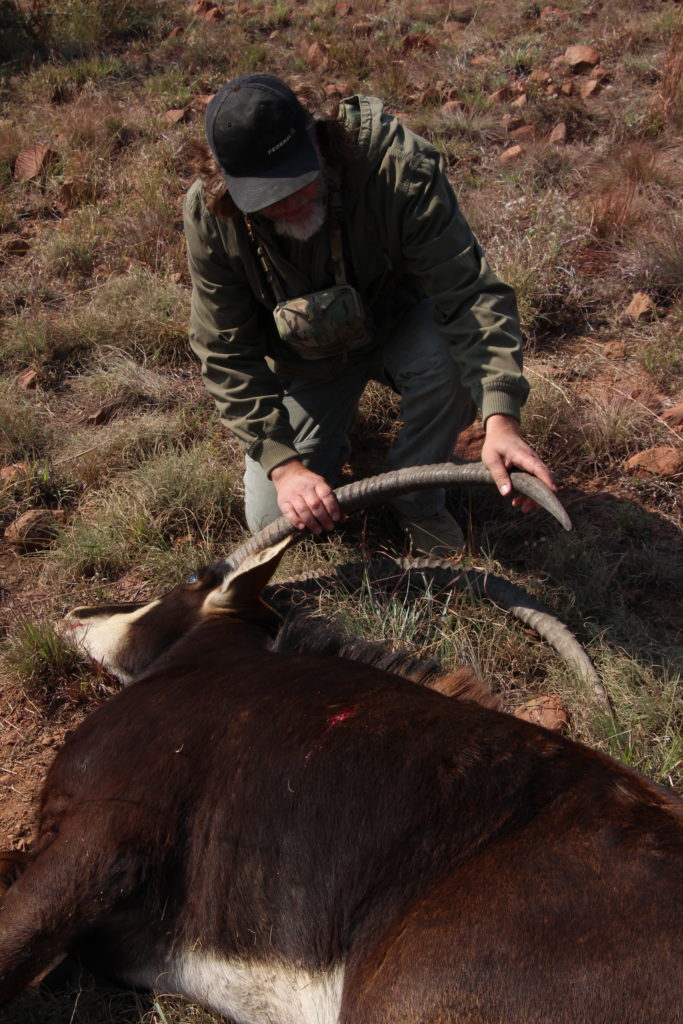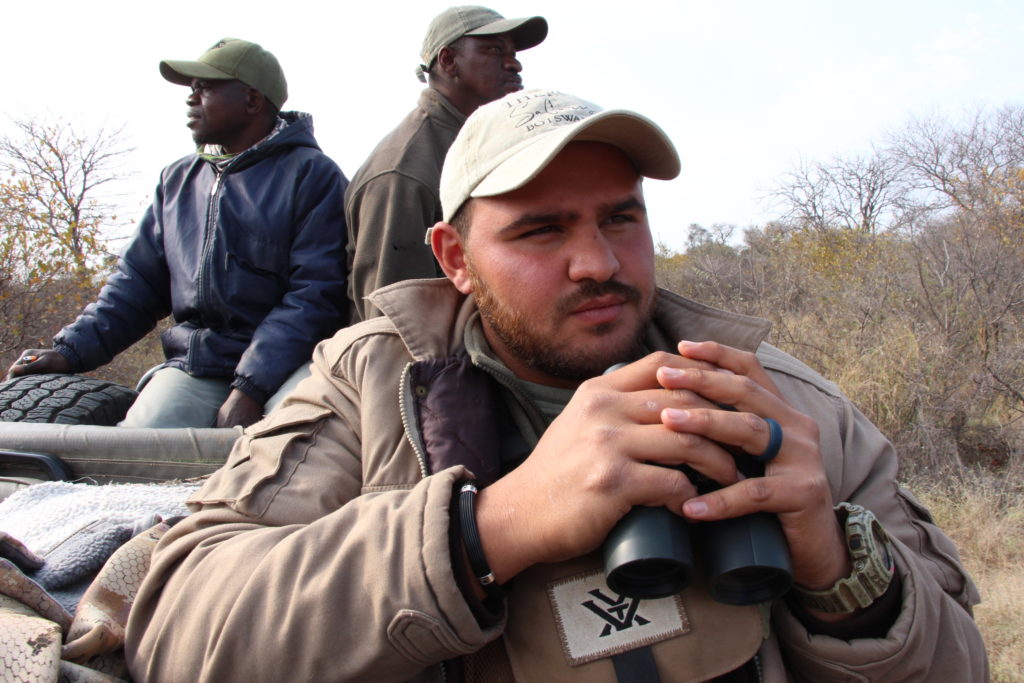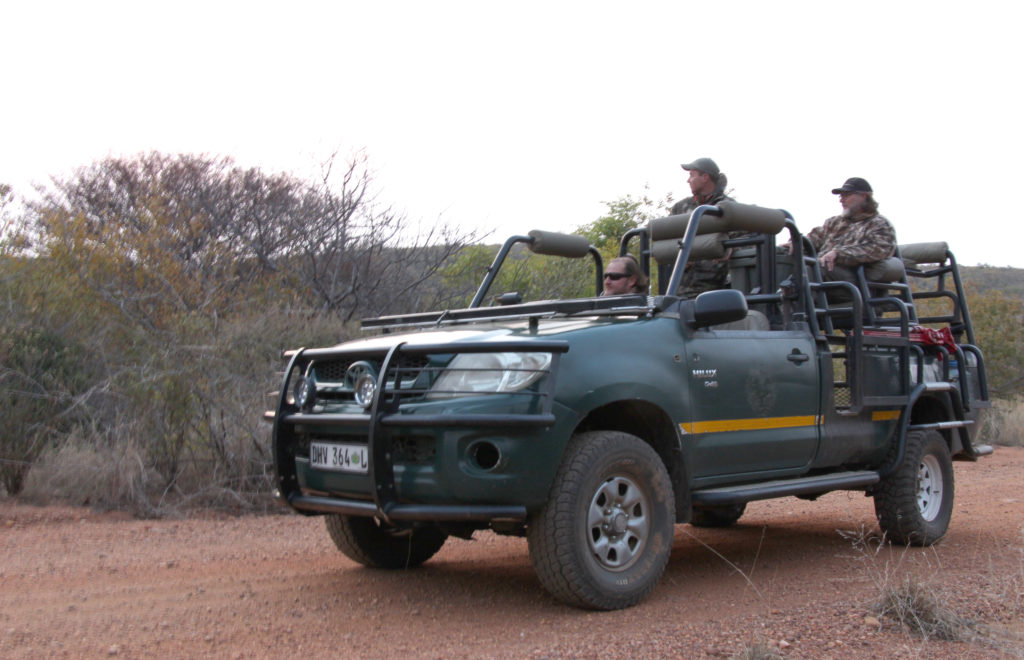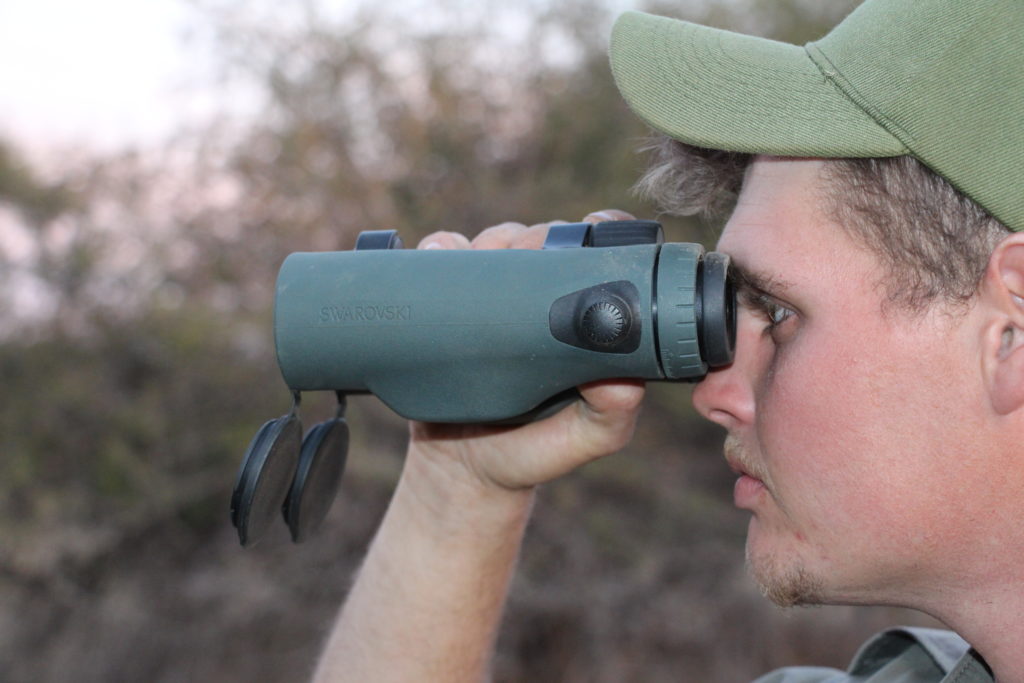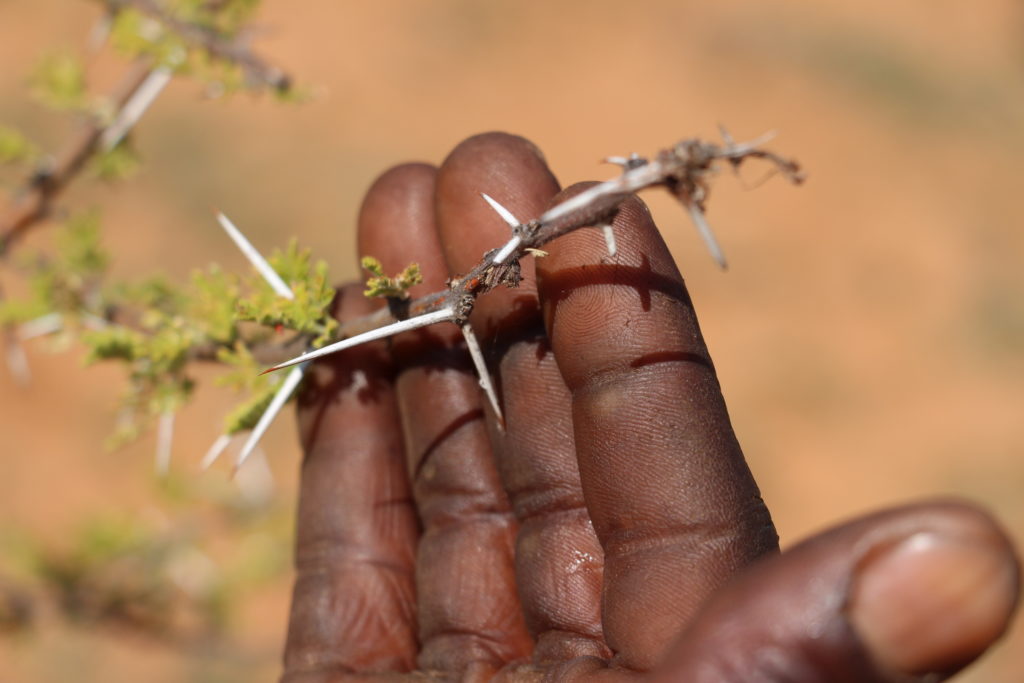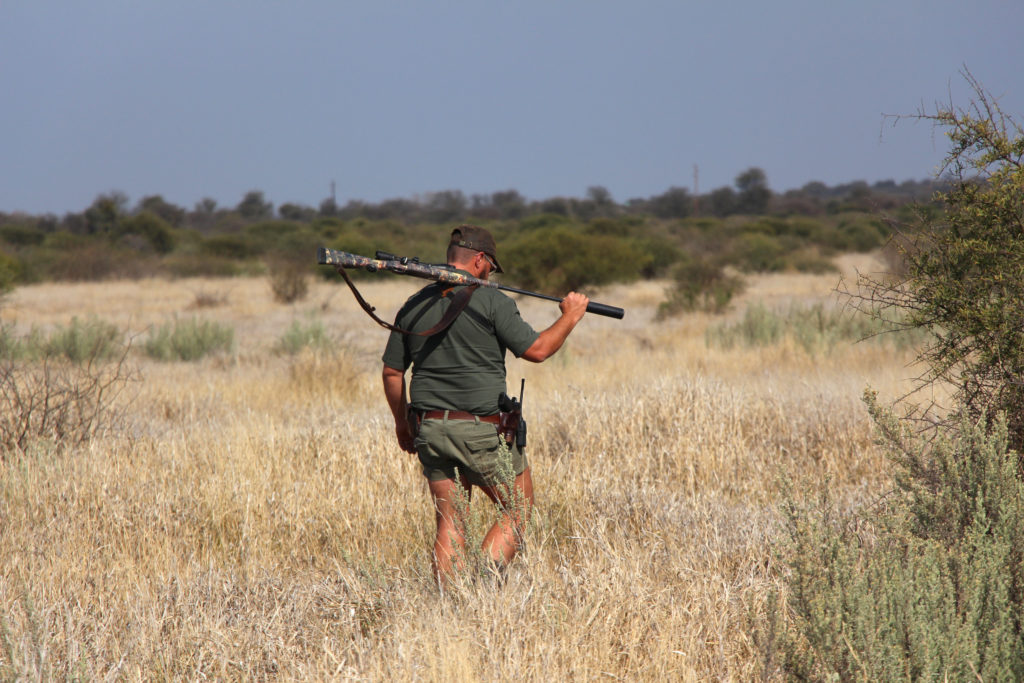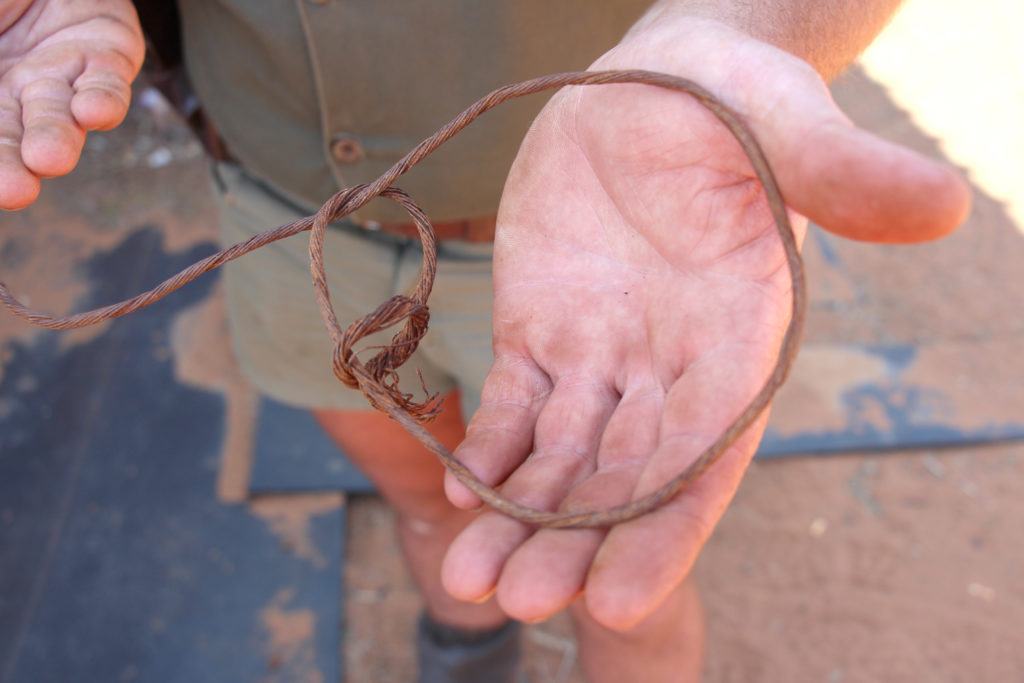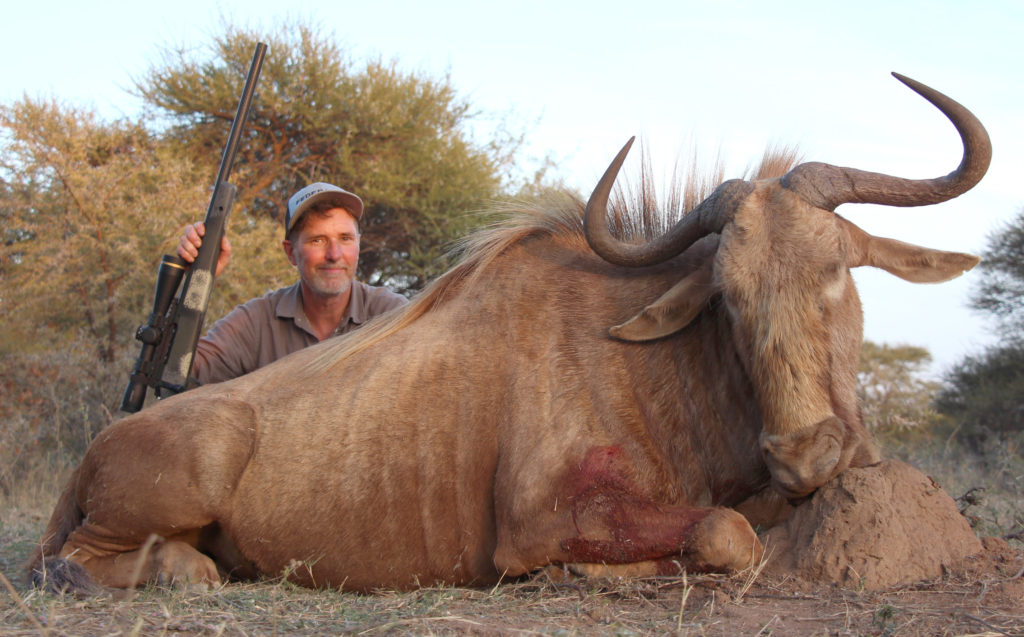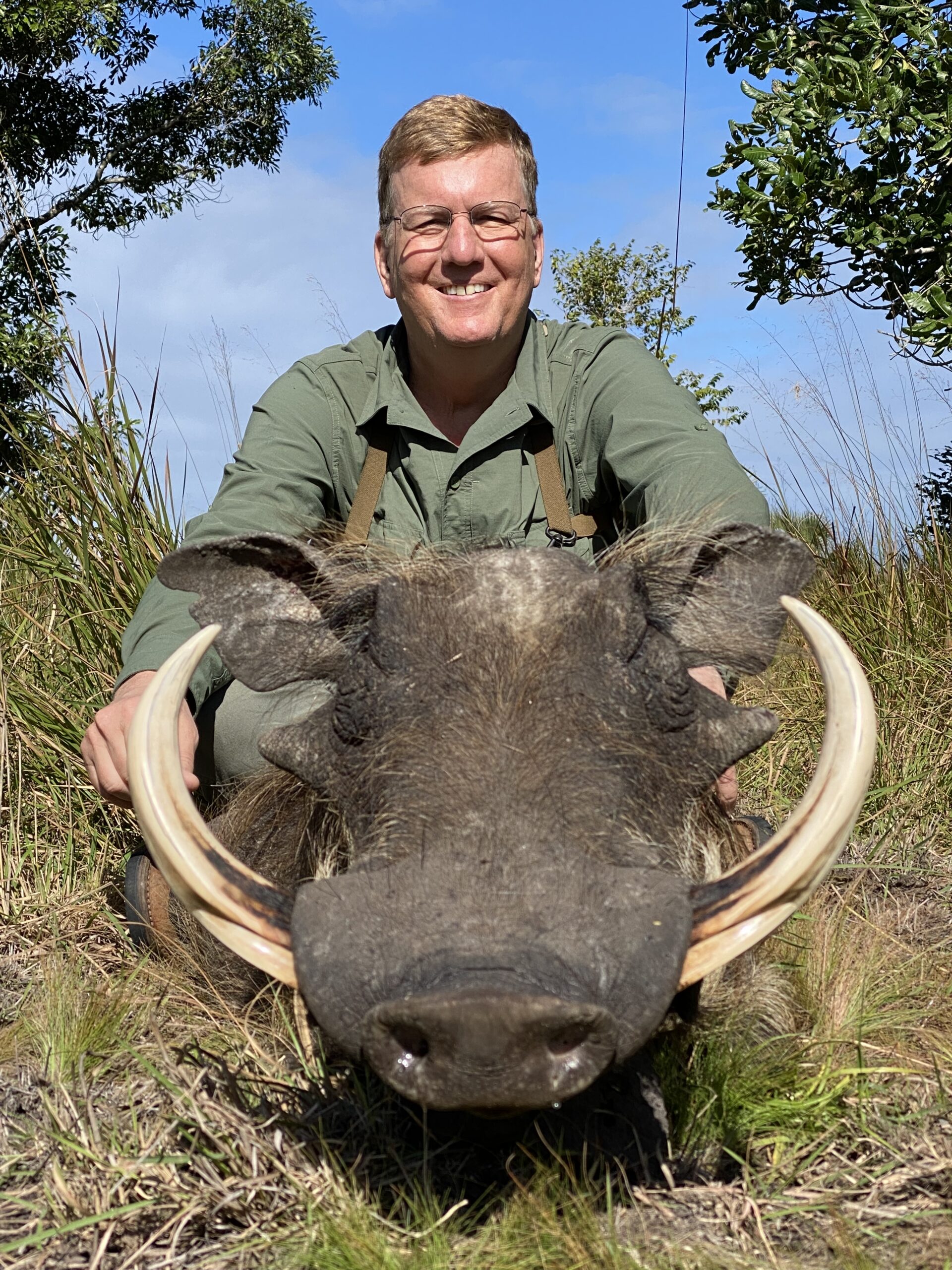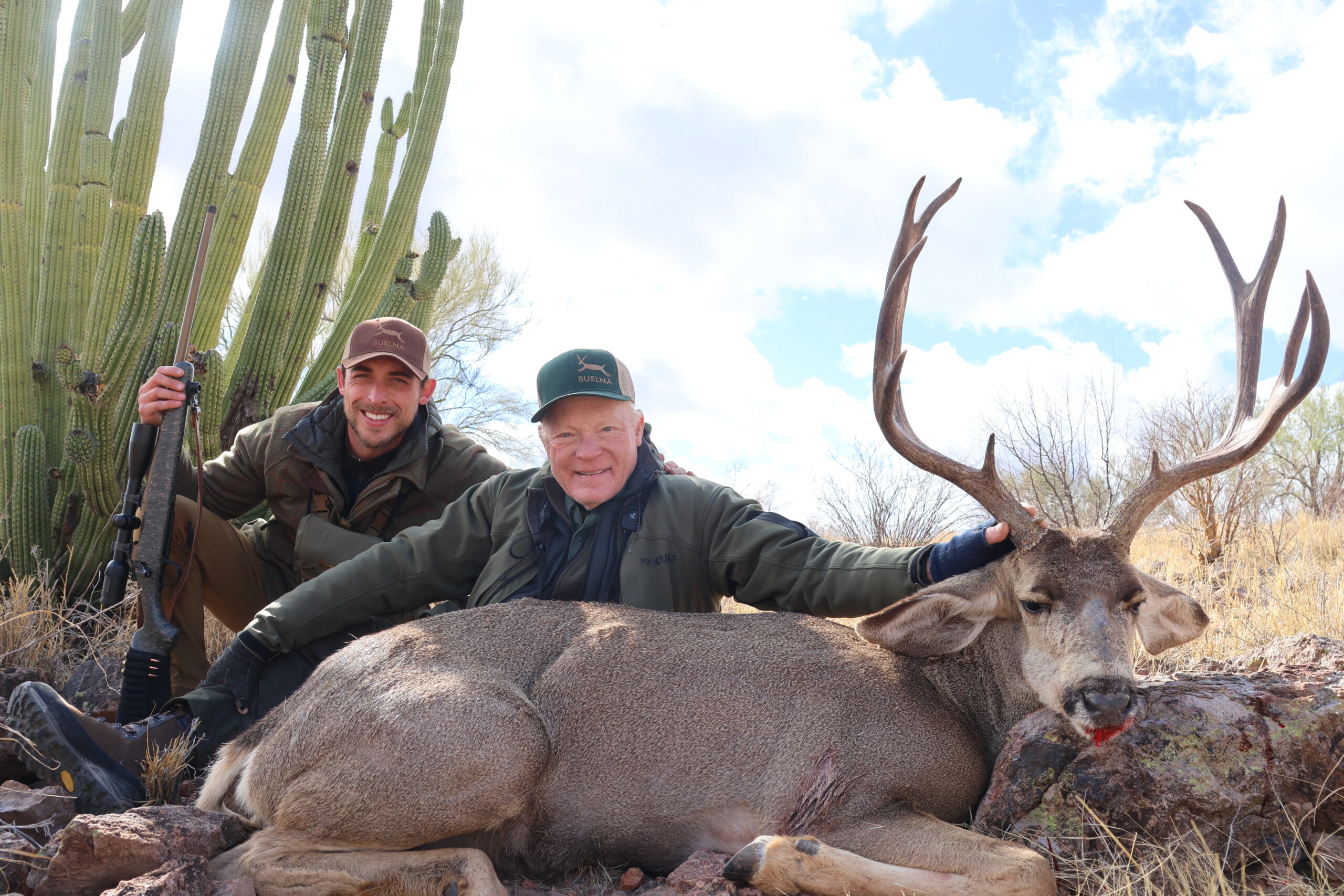This beast put the wild in wildebeest, and after three days’ pursuit, the bush provided.
By John Geiger, Managing Editor SAFARI Magazine
Our hunting party drove red dirt roads in the Waterberg Mountains of South Africa to an area known to have a small herd of golden wildebeests. I’ve taken blue wildebeest in the past but was now smitten by the goldens.
If you’ve never seen one in the wild, their color is magnificent, very unwildebeest-ish. The most common wildebeest colors are gray-blue or black-brown found in the blue and the black wildebeests, respectively. But a golden’s flaxen coat and mane do not fit the character of an animal known to roll in its own dung.
Whether caked in dung or not, the herd was invisible. We are pretty sure we saw the herd boss’ tracks, but we did not see one blonde lock. Gerrie Theron, professional hunter and owner of Theron Safaris, said he had seen a boss bull in the area. This was, in fact, the fifth time he had tried to get a hunter close enough for a shot.
It was possible we were on a fool’s errand: Maybe it had been killed by another hunter, or it might have left the area altogether. But Gerrie, his son Mikyle, trackers KJ and Jans, and I were counting on it still being around.
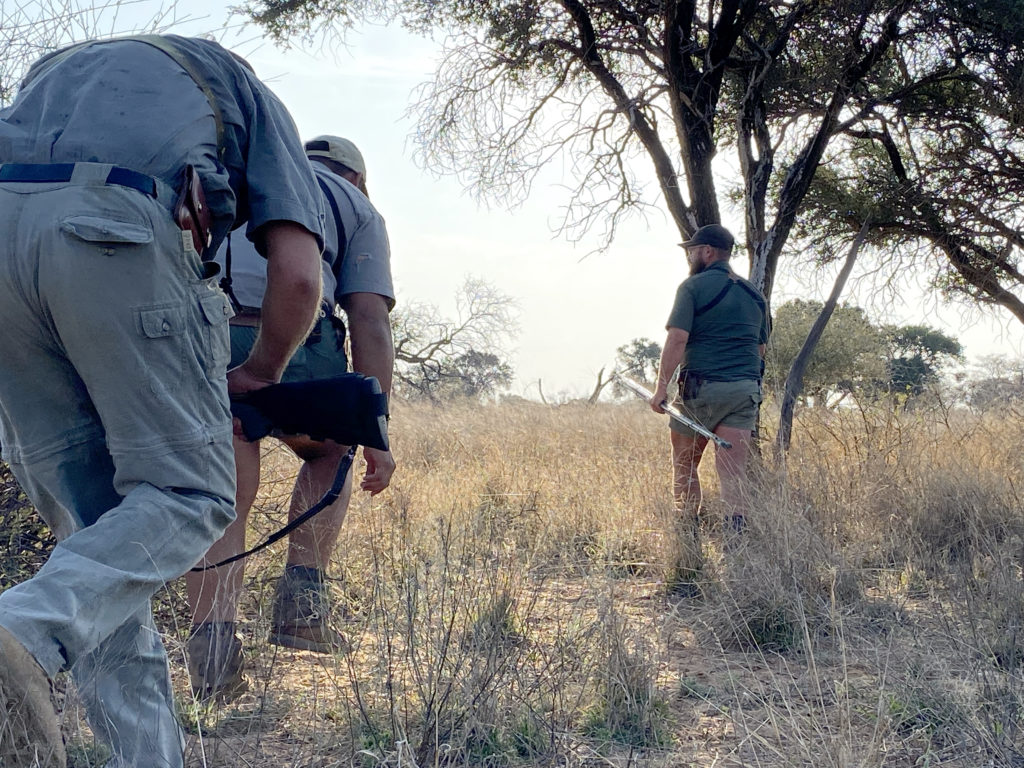
I did get a glimpse of the blonde coat the next day, but it was there and gone in a flash. It had been an epic rainy season in the Limpopo area, and vegetation was dense.
On Day 3, guides Mikyle, Tiaan van der Westhuizen and I slowly snuck up to an open pan, glassed and saw a yellow tail flick in the buffalo thorn. He was 400 yards deep into the trees.
“I can’t let you take that shot, John,” said Mikyle, whispering while looking through a pair of Swarovski EL Ranges. “There are just too many branches between us. I’d hate to wound him if the bullet deflects. We can get you a better shot.”
We waited, but the golden didn’t.
We kept at it, following tracks and hope to reach them before they reached their sanctuary. And finally, our luck changed. We nearly stumbled upon a fine mature bull. He stood just 75 yards away and let me get my gun up. I acquired him in the scope as he stepped out from behind a buffalo thorn tree, and I slipped the 200-grain Terminal Ascent bullet into his chest. He kicked, ran 50 yards and hit the dirt. He was majestic.
Back in camp, I helped prepare the meat that would go into our traditional South African bobotie dinner the next day. The balance of the protein would go to a village near Phalaborwa. The Theron family had made a commitment to support the destitute families there.
The shot was a quartering-to, and I was excited to see if we could recover the bullet. Sure enough, it was up against the far-side skin. It was one deadly mushroom. Later at camp, I cleaned and weighed the bullet. It retained 85.6 percent of its 200 grains.
“I am very satisfied with that,” said Michael Holm of Federal Premium who had invited me on this hunt. “For that close a shot, with all that energy, that bullet performed very well.”
At 100 yards, that bullet was sizzling along at 2,660 feet per second or 1,813 mph, and it walloped the animal with 3,000-plus foot-pounds of force. With the bullet ending on the far side.
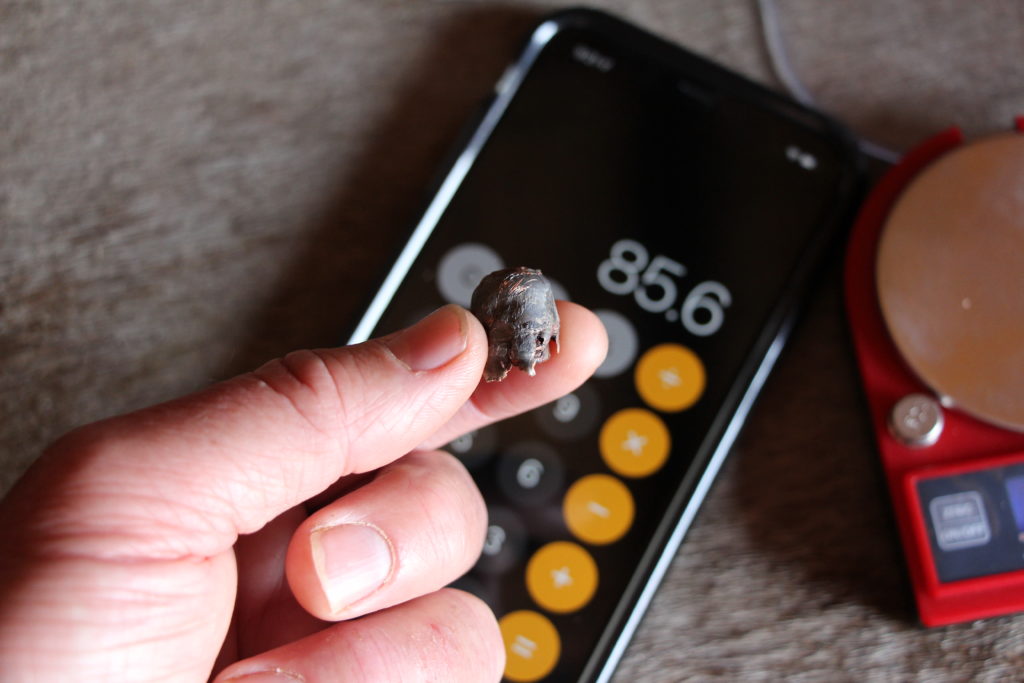
That’s why it’s important to bring quality ammo that performs when the shot is close as well as when the shot needs to be a long one. Federal Premium’s Terminal Ascent cartridges are at the top of a very short list of bullets designed perform close up or way out.
What’s interesting about the bullet I used is that it’s topped with a polymer tip and is hollow, which makes it come apart easily at low velocities. Tips that are too tough can actually hinder expansion.
Accuracy also needs to be baked into any quality hunting bullet. Look for bullets with high ballistic coefficients, which indicate how aerodynamic, or put another way, slippery, the bullet will be in mid-flight. The higher the BC, the sleeker the bullet. Bullets in or near the .600 range are a good standard. The .300 Win. Mag. Terminal Ascent bullet has a BC of .604. The same caliber and weight Barnes LRX is .546, and Hornaday’s fine ELD-X is .597.
The Terminal Ascent I used performed very well on the wildebeest, as well as a white blesbok (6.5 Creedmoor, 130 grains) and boss waterbuck (.300 Win. Mag., 200 grains). Both were broadside, so no bullet was recovered, and neither required tracking. (I also took a bush pig at 100 yards with a new Remington cartridge that they’ve asked me to keep under wraps until early 2023. You’ll want to check out SAFARI Magazine then.) But that golden wildebeest will remain one of my favorite hunts with one of my favorite bullets.
Five years ago, I took my first wildebeest, a blue gnu on the edge of the Kalahari in Namibia. Interestingly, it was also 75 yards away, quartering-to. I also recovered the bullet on the far shoulder, weighed it and proclaimed that the bullet performed beautifully close-in. A long shot at a red hartebeest later on assured me that the bullet was also a long-distance stud. That bullet was Federal’s Edge TLR — Terminal Ascent’s predecessor.
The Edge was an excellent bullet and everyone who shot it knew it. But Federal improved it with one main modification: They added one more groove around the belly of the bullet. Grooves give minuscule shavings and artifacts a place to go when that bullet grinds its way through the lands and grooves of the barrel. According to engineers, that change increased accuracy. Terminal Ascent was born. By getting it right, they took the bullet to the next level.
The evolution of this bullet to its present state ensured that I shot accurately, recovered all the game I aimed at and thoroughly enjoyed my experience in the Southern Hemisphere, below the Southern Cross and in the company of new lifelong friends.
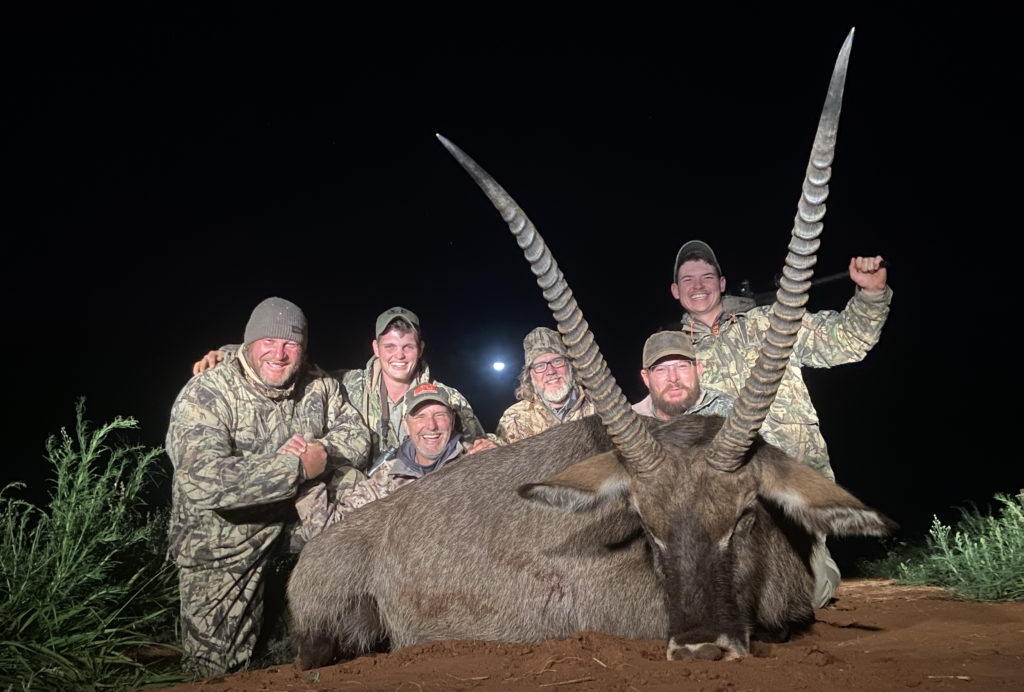
It took a flight nearly halfway around the world and three days in the bush for me to get a shot at the plains game animal of my dreams. When the golden opportunity popped up, my gear and I were ready.
When Getting Gear, Think Outside The Box
Gear on Day 4 I can be completely different than on Day 1. On the first say of a safari, you think you know what you need, and at least you take a guess. By Day 4, you’ve figured out what’s necessary and you end up leaving a lot back at the tent. You also might pick up a few useful tools along the way. Here are a few things I brought and picked up.
Winchester Model 70 Super Grade. To me, Mauser 98-inspired action is the best part of this gun. The controlled-feed action holds that cartridge in the worst of circumstances, especially while hunting dangerous game when you really need to chamber and fire without fail.
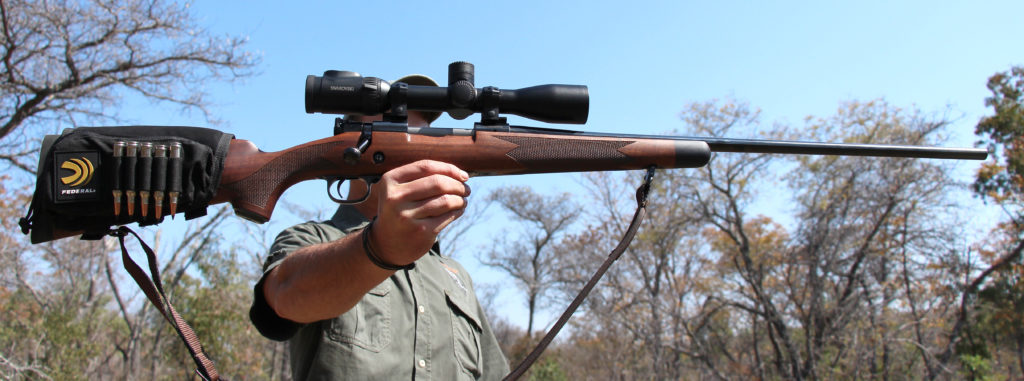
The safety, too, is one of the best. It’s a three-position safety on the bolt shroud. This lets you either lock the bolt and trigger, or operate the bolt but not the trigger, or all the way forward, unlock the bolt and the trigger.
This also helps ensure the bolt won’t move and cartridge come out of battery as you’re creeping among buffalo thorn or army-crawling in the Karoo. Plus, for a factory the gun, the Model 70’s lines and beauty are second to none. I also used an excellent Springfield 2020 Waypoint in .300 Win. Mag. and a Benelli Lupo in 6.5 Creedmoor.
Short shorts. I asked guide Tiaan van der Westhuizen, better known as “Chicken,” or Hoender in Afrikaans, why the tiny khaki shorts? Chicken said they are quieter than long pants, lighter when you’re walking all day and cooler for Limpopo, which is at the Tropic of Capricorn after all. Sometimes the shorts these guys wear are way too short. But as winter gave way to summer in Limpopo, I opted to drop into Wildman’s hunting store in Lephalale and get my own pair of PH shorts, although they were not super-short. Sure, the PH got a good laugh at the American with white legs, but they were better gear for this kind of hunting, and I just happened to have killed the golden wildebeest the next day. Coincidence?
Gaiters. Not often do overseas hunters wear the ubiquitous PH ankle gaiters but should. Hunters who don’t wear gaiters will get burrs, thorns, sand and muck inside their boots. That will slow you down and be plain uncomfortable.
Sunglasses. For hunting savannahs and deserts, take a pair of sunglasses in a hard case like Gatorz’s Deltas.
Gun case. Wheels are crucial, especially if taking two guns. Plano has really upped their quality-case game with their Field Locker Element series. Wheels are a must.
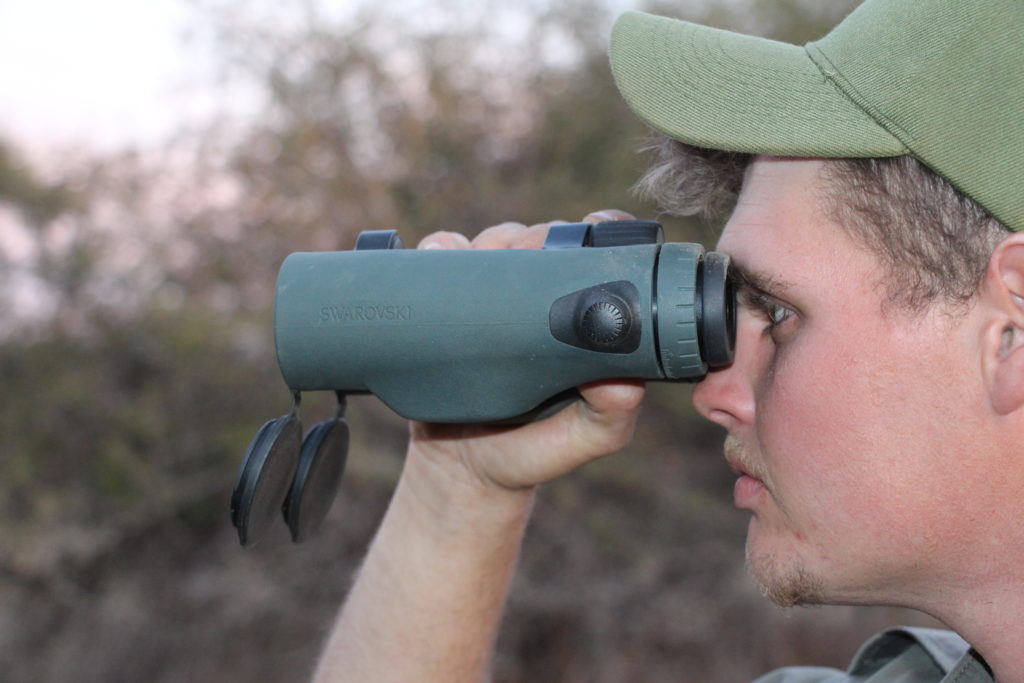
Swarovski EL Range. The only time these were not around my neck was when we were stalking near game. I’d hand them to my guide who would hand me his non-Swaro binos. The guide was the eyes of the hunting party, so I wanted him to have the best possible tool for seeing and identifying game in the distance. At one point the young guide pointed to another older guide, and said to me, “John. Show him your binos.” I handed the Swaros to the other guide. Honestly, I felt bad because he literally cried. While these binos are about $4,000 in the USA and Europe, they are much more expensive in South Africa. His guide, who depends on his binos every day, would likely never be able to afford them, and he had to hand them back to me. The EL Ranges are highly accurate rangefinders as well, and perhaps the best part: they are much lighter than combo bino-rangefinders of the past. The 8x42s and 10x42s come in at about 32 ounces. —JG
“Africa is an emotional experience for many who come here. Some people have been here many times, others have saved five years for their first safari experience. I feel like I have the privilege of being the middleman between their world and this world. We do all we can and give them that authentic Africa experience.”
—Gerrie Theron
Rugby Player Has A Ball As PH
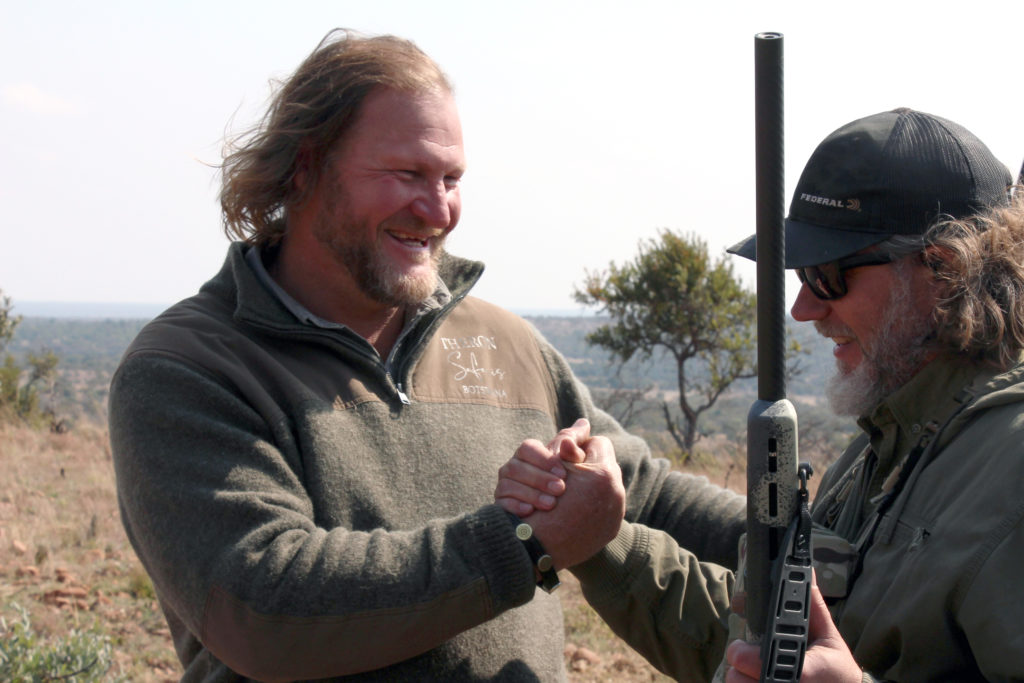
Theron Safaris is a family-based business, and they focus on delivering the best African experience and big-game hunting success.
Patriarch Gerrie Theron is determined to see South African big-game hunting continue well into the future. They survived the pandemic and he’s built a thriving business that supports several communities and employs his sons and extended family. He’s based in Limpopo but hunts all over South Africa as well as Botswana and Zimbabwe.
“Africa is an emotional experience for many who come here. Some people have been here many times, others have saved five years for their first safari experience,” said Theron. “I feel like I have the privilege of being the middleman between their world and this world. We do all we can and give them that authentic Africa experience.”
Theron has a hunt camp in the Waterbergs, another near Kruger, still others in Botswana and Zimbabwe, as well as a Cape buffalo camp in Limpopo that is designed to bring back Old Africa.
The Cape buffalo camp is a special place. Sure, there are hot showers there, but the water is heated in a bucket over a fire and poured over you in the shower. Buffalo roam without fences. Canvas tents, wood safari chairs and brandy sundowners help bring back clients to the nomadic safari days of the previous centuries. One pair of clients even dressed the part: he in an 18th century British tropical helmet and cloth gaiters, and she in a linen dress and safari bonnet.
“It was a great idea, and we really enjoy helping them bring back the past,” said Theron.
The couple also took a fine Cape buffalo with a Sharps.
Theron revels in his role as guide. But originally, he was on a very different path. Theron is larger than life physically and in personality. His arms are super-sized. His laugh shakes the thatched roof. It made him a rugby machine, and he played professionally — and was eyeing the national team, the Springboks — until he was injured in 1998. He hung up his cleats and tried to see life beyond the stadiums. His second love was hunting, and he started Theron Safaris not even a year later. The business had been extremely successful since. But there is no denying that the pandemic hurt even the outfitters with solid business plans and cash reserves.
“The pandemic made us all aware how important our overseas clients are,” said Theron. “RSA has always been ready for clients, but now after the pandemic, we are so looking forward to their return. I think we’re even more attentive to their needs. PHs are hungry to take people hunting again.”
Theron also said the people are, literally, hungry as well.
Many destitute communities depend on local outfitters to supply protein. With no hunting for nearly two years, protein was in low supply. Theron and his family support people in Phalaborwa, a community near Kruger National Park. They built classrooms, supply rugby boots to students and regularly deliver meat from hunts. They kept their word when it was a hit to the business, and now can resume regular loads of protein from paid hunts.
“The pandemic was tough on everyone here,” said Theron. “We need hunters to come back and visit us. —JG
